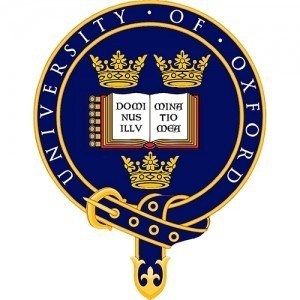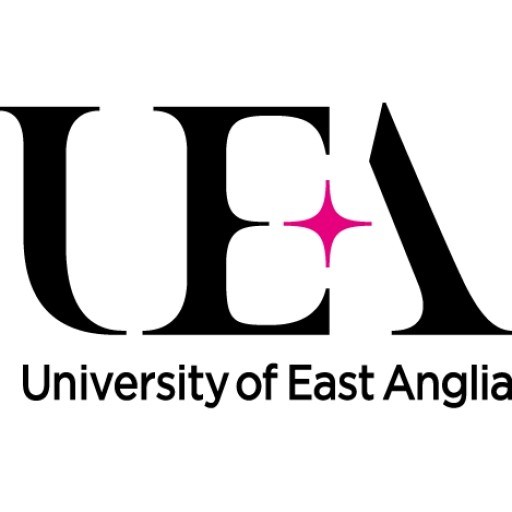Photos of university / #oxford_uni
The MSc in Architectural History at the University of Oxford offers a comprehensive and rigorous exploration of the historical development of architecture from antiquity to the modern era. Designed for students with a keen interest in understanding how built environments reflect cultural, social, political, and technological changes across different periods and regions, this programme provides a deep and broad perspective on architectural history. Throughout the course, students will examine a diverse range of architectural styles, architectural theory, urban developments, and preservation practices, supported by access to Oxford's extensive collections and world-renowned libraries. The programme combines advanced academic research with practical analysis, enabling students to develop critical skills in visual and textual analysis, historiography, and scholarly research methods. Students have the opportunity to engage with a wide variety of topics, including the architecture of ancient civilizations, medieval and renaissance architecture, baroque and neoclassical design, modern and contemporary architecture, as well as the cultural and political contexts that influence architectural developments. The MSc in Architectural History is suitable for those seeking to pursue careers in academia, heritage management, consultancy, or related fields in architecture and the arts. The programme is delivered through interdisciplinary seminars, lectures, seminars, and independent research, culminating in a substantial dissertation that allows students to pursue a specific research interest in depth. With access to Oxford’s world-class resources, including the Bodleian Library and several dedicated collections relevant to architectural history, students are equipped with the skills and knowledge necessary to contribute meaningfully to scholarly and professional fields related to architecture. The programme encourages critical thinking, scholarly rigor, and the ability to communicate complex ideas effectively. Graduates of this programme leave with a broad understanding of architectural history, strengthened analytical skills, and a solid foundation for further academic research or professional practice in architecture, preservation, and cultural heritage sectors.
Unit 1: Historical Studies 1
Settlement, Landscape and Medieval Buildings
Unit 1 concentrates on the medieval period. It provides an introduction to the evolution of the landscape and the major elements of architectural history in England up to the sixteenth century.
The aim of the unit is to enable you to acquire a sound understanding of the basic development of medieval buildings and their context.
Teaching is by means of lectures, held in Rewley House, and field trips. You will also need to ensure you have sufficient time for directed reading and private study. Tutorials are available by request.
Assessment consists of three essays, each of 1,500 words.
Unit 2: Historical Studies 2
Post-Medieval Buildings
The unit will continue the themes introduced in Historical Studies 1 and will analyse the major architectural developments from the sixteenth century to the present century.
The unit will seek to build on the Historical Studies 1 to enable you to acquire a sound understanding of the development of English architectural history and its broader context down to the present century in a manner which is relevant to historic conservation.
Teaching is by means of lectures at Rewley House. You will also need to ensure you have sufficient time for directed reading and private study. Tutorials are available by request
Assessment consists of two essays, each of 2,000 words.
Unit 3: Site evaluation and survey: Local Historic Building Study
This unit is based at Oxford Brookes University in Headington.
This is a skill-based unit designed to develop expertise in understanding the special architectural and historical characteristics of a particular site, building (or group of buildings) and to develop techniques for its representation through research, measurement, and drawn and photographic recording.
This unit will enable you to develop the skills necessary to plan, prepare and execute a programme for the recording of structures and sites, and will introduce the main sources of archive material for investigations into historic buildings, sites and monuments. It provides an introduction to the making of a competent analytical record of a site through text, photographic and measured surveys, and drawn representation.
Teaching is by means of lectures, field trips and practical sessions, which need to be supplemented by private study. You will also have to conduct individual fieldwork.
Assessment is via a workbook record of a selected building, to be submitted by mid-May.
This unit is taught on either side of Christmas and Easter, ending in mid-May, at Oxford Brookes University in Headington, Oxford. The detailed timetable for this Unit will be circulated at the start of Michaelmas term. The syllabus will cover drawing and survey techniques, documentary research, photographic recording and practical building analysis.
Unit 4: Individual dissertation
An 8,000-word dissertation on a subject relevant to architectural history, chosen in consultation with the course tutor and due for submission by the end of August. Dissertations are supervised within the Department for Continuing Education.
This unit provides an opportunity for an extended exploration of a single topic based on primary and secondary research to demonstrate the skills and knowledge gained in the other elements of the course.
Applicants are normally expected to be predicted or have achieved a first-class or strong upper second-class undergraduate degree with honours (or equivalent international qualifications), as a minimum, in any subject. Applicants need not necessarily have studied architectural history previously, but should be able to show evidence of prior interest in the subject, eg through work-related activities, voluntary work in a related field, completion of previous courses (including evening classes), or membership of relevant local or national societies.
For applicants with a degree from the USA, the minimum GPA normally sought is 3.5 out of 4.0.
If you hold non-UK qualifications and wish to check how your qualifications match these requirements, you can contact the National Recognition Information Centre for the United Kingdom (UK NARIC).
No Graduate Record Examination (GRE) or GMAT scores are sought.
Applications are also considered from those who do not have previous higher education. Vocational qualifications equivalent to NVQ level 4 are acceptable substitutes, as is at least three years’ experience in a conservation-related profession.
All applicants must have a broad knowledge of English political, social and economic history.
- Official transcript(s)
- CV/résumé
- Personal statement: One to two pages
- Written work:One essay of 2,000 words
- References/letters of recommendation: Three overall, all of which must be academic
ENGLISH LANGUAGE REQUIREMENTS
Higher level
|
est |
Standard level scores |
Higher level scores |
||
|
IELTS Academic |
7.0 | Minimum 6.5 per component | 7.5 | Minimum 7.0 per component |
|
TOEFL iBT |
100 |
Minimum component scores:
|
110 |
Minimum component scores:
|
| Cambridge Certificate of Proficiency in English (CPE) | 185 |
Minimum 176 per component |
191 |
Minimum 185 per component |
| Cambridge Certificate of Advanced English (CAE) | 185 |
Minimum 176 per component |
191 |
Minimum 185 per component |
Funding for the Architectural History program at the University of Oxford is primarily available through a range of scholarships, grants, and financial aid options designed to support both home and international students. The university offers numerous funded opportunities, including the Clarendon Fund, which provides highly competitive scholarships covering tuition fees and a generous stipend for living costs. Other college-based scholarships and bursaries are also available, often awarded based on academic merit or financial need, and applicants are encouraged to explore specific college funding schemes as part of their application process.
Additionally, the university facilitates external funding sources, such as government-sponsored loans and awards, for eligible students from the UK and abroad. Some students may also secure sponsorships or grants from cultural, historical, or architectural organizations that support studies in architectural history. For students engaged in research projects or additional extracurricular activities, there are often fellowship and research funding opportunities that can be applied for through departmental or university channels.
International students should consult the university’s dedicated webpage for International Students for specific guidance on funding options and eligibility. The university also offers detailed guidance on financial planning, including estimates for tuition fees, accommodation, and living expenses during the course of study, ensuring students can better prepare their financial arrangements. While scholarships and bursaries significantly reduce the financial burden for many students, it is recommended that applicants also consider personal savings, family support, or external funding sources to fully cover their study-related expenses.
The university is committed to supporting its students financially throughout their academic journey in architectural history, and applicants are advised to apply early for scholarships and funding opportunities to maximize their chances of securing financial aid. Information about the application process, eligibility requirements, and deadlines can be found on the university’s official website and through the department’s administrative offices, ensuring prospective students are well-informed and prepared to pursue their studies with adequate financial backing.
The BA in Architectural History at the University of Oxford is an academically rigorous undergraduate program designed to provide students with a comprehensive understanding of the development of architecture across different periods and regions. The course aims to develop students' critical thinking, historical analysis, and visual literacy by engaging with a wide range of architectural styles, theories, and contexts. Students explore architectural practices from ancient times to the modern era, studying buildings, landscapes, and urban environments. The curriculum includes modules on classical architecture, medieval structures, Renaissance and Baroque developments, modernist movements, and contemporary architectural trends. Emphasis is placed on understanding architecture within broader cultural, social, and political frameworks, fostering an appreciation of how architecture influences and reflects society.
The program involves a combination of lectures, seminars, tutorials, and site visits, offering an interactive learning environment. Students are encouraged to undertake independent research and develop their analytical skills through essays and presentations. The course typically spans three years for full-time students and is delivered by leading academics and specialists in the field. Practical skills such as visual analysis, research methodologies, and critical writing are integral parts of the curriculum. Students also benefit from access to extensive archives, libraries, and museums, including the University’s own Bodleian Libraries and the Ashmolean Museum.
Graduates of the program often pursue careers in academia, architecture, heritage management, conservation, curation, and related fields. They are equipped with a deep understanding of architectural history, enabling them to approach contemporary architectural issues with a rich historical perspective. The degree provides a strong foundation for further postgraduate studies or professional careers in architectural research, teaching, or cultural sectors. The University of Oxford’s esteemed reputation and rigorous academic environment ensure that students receive a thorough and enriching education in architectural history.






